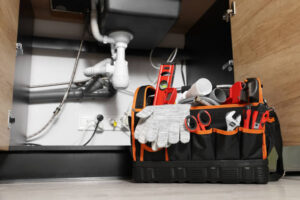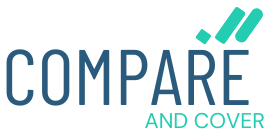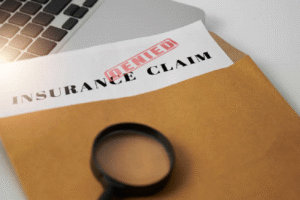When you buy homeowners insurance, you expect it to protect your biggest investment—your home. And for the most part, it does. But here’s the catch: many standard policies come with hidden gaps in coverage that could leave you with hefty out-of-pocket bills if disaster strikes.
If you think your policy covers everything, it’s time to take a closer look. In this guide, I’m breaking down the five most common gaps in homeowners insurance and sharing simple ways to close those gaps so you’re fully protected.
1. Flood Damage Is Usually Not Covered
One of the biggest surprises for many homeowners? Flood damage is generally not covered by your standard homeowners insurance policy. That means if rising waters, heavy rains, or a storm cause flooding that damages your home, you’re on your own.
This might sound crazy since floods happen frequently and can cause devastating damage. But insurance companies treat floods differently because they can lead to widespread, catastrophic losses.
What Can You Do?
The good news is, flood insurance is available—it’s just sold separately. The National Flood Insurance Program (NFIP), backed by the federal government, offers flood policies. Private insurers also sell flood insurance in many areas, sometimes with more flexible terms.
If you live in a flood-prone area or near rivers, lakes, or the coast, flood insurance isn’t just a good idea—it’s essential. Don’t wait until it’s too late.

2. High-Value Items May Have Limited Coverage
Do you have expensive jewelry, art, collectibles, or high-end electronics? Your homeowners insurance may only cover these valuable items up to a certain dollar limit. That means if you lose or damage something really valuable, your insurance payout might be far less than its actual worth.
For example, if your policy covers personal property up to $2,000 for jewelry but your engagement ring is worth $7,000, you’re underinsured by $5,000.
How to Protect Your Priceless Stuff
Ask your insurer about adding scheduled personal property endorsements or “rider” coverage. This means your high-value items get listed separately with their appraised values and are insured for their full worth.
You’ll want to get your valuables professionally appraised and keep a detailed inventory with photos and receipts to support your claim if needed.
3. Actual Cash Value vs. Replacement Cost — Know the Difference
Not all insurance policies pay you the same way after a loss. Some offer actual cash value (ACV) coverage, which factors in depreciation. That means if your 10-year-old carpet is destroyed, you won’t get the full cost to buy new carpet—you’ll get a lower payout based on the carpet’s current value.
On the other hand, replacement cost coverage reimburses you for the full amount it takes to replace or repair the damaged item or home feature with new materials, without subtracting for depreciation.
Why This Matters
Opting for actual cash value might save you money on premiums, but in a claim, you could end up paying a lot more to get your home back in shape.
When shopping for or reviewing your policy, look for replacement cost coverage on both your home’s structure and your personal belongings. It’s worth the extra premium for the peace of mind.
4. Running a Business From Home? Your Policy Might Not Cover It
Many people work from home these days, whether it’s freelancing, consulting, or selling products online. But a typical homeowners insurance policy usually doesn’t cover business-related equipment, inventory, or liability.
If your laptop, printer, or stock of goods gets stolen or damaged, your standard policy likely won’t reimburse you. And if a client or visitor gets hurt on your property during business hours, your liability might not be covered either.
What Can You Do?
Check if your insurer offers a home business endorsement that you can add to your policy. This endorsement typically covers business property and some liability risks.
If your business is larger or more complex, you may need a separate small business insurance policy to ensure you’re fully protected.
5. Renovations or Upgrades Not Reported Can Leave You Underinsured
Have you recently remodeled your kitchen, finished the basement, or added a new room? If you didn’t update your insurance policy, you might be underinsured. This means that if you suffer a loss, your payout could be based on the old value of your home, not its current, improved value.
Even simple upgrades like new flooring or upgraded appliances can affect the cost to rebuild or repair your home.
How to Avoid This Pitfall
After any significant renovation or upgrade, call your insurance agent and update your policy. They can adjust your coverage and premiums to reflect your home’s current replacement cost.

Bonus Tip: Regularly Review and Update Your Policy
Homeowners insurance isn’t a “set it and forget it” kind of coverage. Life changes, home improvements, and new valuables can all affect what kind of protection you need.
Make it a habit to review your policy yearly and whenever you have major life changes. This simple step helps avoid surprises and ensures your policy keeps pace with your needs.
Final Thoughts: Don’t Let These Gaps Cost You
Homeowners insurance is there to give you peace of mind. But if you’re unaware of these common gaps, you could face unexpected expenses at the worst possible time.
Flood damage, expensive valuables, depreciation, home businesses, and renovations are all areas where many people get caught off guard.
By knowing these gaps and working with your insurance agent to fill them, you’ll protect not just your home, but your financial future too.
If you’re not sure where to start, ask your agent to walk through your policy with you, help identify gaps, and recommend tailored solutions. Better safe than sorry!





